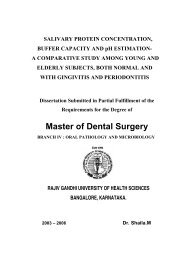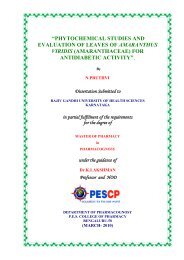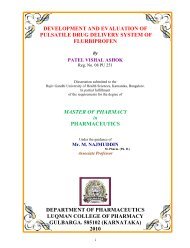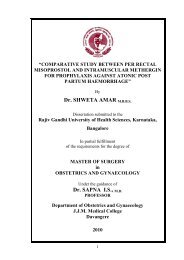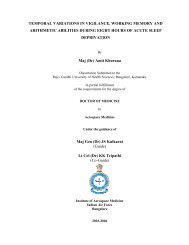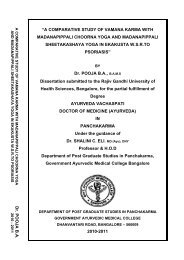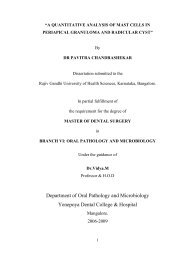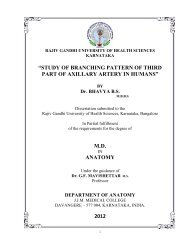Kalabhavi Srinivas K.pdf
Kalabhavi Srinivas K.pdf
Kalabhavi Srinivas K.pdf
Create successful ePaper yourself
Turn your PDF publications into a flip-book with our unique Google optimized e-Paper software.
MANAGEMENT :<br />
Surgical management :<br />
Proforma<br />
The evolution in the surgical correction of UPJ obstruction has occurred on a<br />
number of fronts, with open surgical techniques yielding way to endoscopic and<br />
laparoscopic approaches. Although there are a variety of surgical approaches to<br />
correction of UPJ obstruction, they can be classified into 3 categories.<br />
1. Open surgical procedures.<br />
2. Endoscopic (antegrade or retrograde) procedures.<br />
3. Laparoscopic procedures.<br />
1. OPEN SURGICAL PROCEDURES:<br />
The open surgical techniques that have the greatest applicability can be<br />
classified into 3 main groups.<br />
a. The dismembered pyeloplasty<br />
b. Flap procedures<br />
c. The incisional - intubated type<br />
The Anderson-Hynes pyeloplasty (1949) has become the most commonly<br />
employed ‘open’ surgical procedure for the repair of UPJ. Open pyeloplasty for<br />
correction of UPJO remains the gold standard against which all alternative therapies<br />
are compared. The overall success rates of open pyeloplasty range from 90-100% 28,29 .<br />
The technique of dismembering the ureter was borne out of necessity in the<br />
repair of retrocaval ureter (Anderson and Hynes, 1949). There was reluctance on the<br />
part of surgeons elsewhere because of concerns about severing the neural continuity



